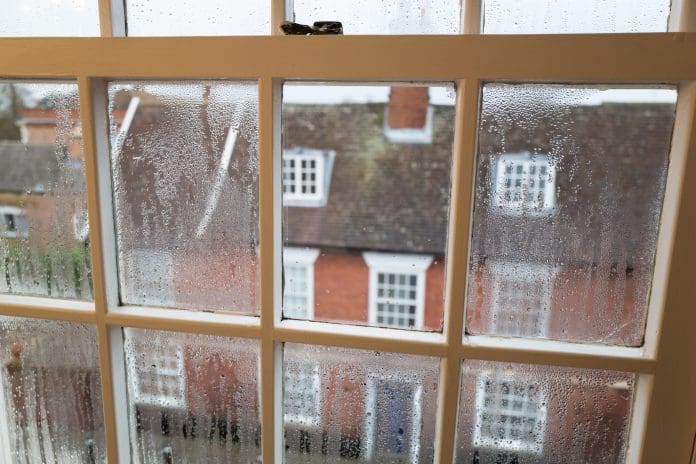There’s no doubt that condensation is an important topic in our industry. But your time is precious, so Selectaglaze is bringing everything together in one easy-to-read guide
What is condensation? In a nutshell, it’s water droplets that are formed when warm moist air comes into contact with a cold surface. This can be internal, external or – in the case of secondary, double or triple glazing – between cavities.
As our homes have become better insulated, warm moist air builds up a lot more easily than for previous generations. So when the temperature drops outside, condensation can appear more regularly.
With non-porous materials like glass, the droplets run down its surface. However, when the cold surface is formed of a porous or semi-porous material such as paintwork and wood, some of the moisture is absorbed by the material.
“The average home generates 21 pints of condensation every 24 hours.”
Why is condensation a problem?
First of all, it’s a nuisance that can cause unsightly window streaks and smears. But condensation can also cause health problems, along with damage to paint, plaster and woodwork.
More seriously, persistent damp indoors can be a breeding ground for the toxic black mould stachybotrys chartarum.
Left untreated, it will start to undermine the surface on which it has formed. From a health perspective, it produces mycotoxins which have been directly linked to respiratory problems and much more.
Can secondary glazing help?
It can prevent condensation on the room side glass pane with U-values up to 1.27. A fully independent well-sealed frame ensures minimum air leakage and traps an insulating layer of air, which cuts down heat loss by 50%.
This can be increased to 65% if low-E glass is used and to 75% with high-performance sealed units.
However, by stopping warm air leaking out of the property, we’re also storing up potential condensation problems.
All buildings (especially older ones) need to breathe. So you need to think about the airflow in your property, especially in areas of high moisture like bathrooms and kitchens.
How else can condensation be avoided?
The only sure-fire way of stopping condensation is to remove all the moisture out of the room, preferably by ventilation. This is achievable if you have air conditioning or a dehumidifier but generally, it means opening your windows and letting the cold in.
In the bathroom: Open a window after using the shower or bath and leave it open for at least 10 minutes with the door closed to vent any excess moisture.
On laundry days: Try to dry clothes outdoors. Failing that, keep your washing in a closed room with an open window.
In the kitchen: Use an extractor fan when cooking. Use saucepan lids and open a window or door to help excess steam escape.
In general: Try to keep the ambient temperature constant, as rapid cooling and heating of the interior of a building can result in warm air holding excess water vapour.
What about in-cavity condensation?
If your secondary glazing is designed, manufactured and installed by specialists, this really shouldn’t be a problem. But if warm air finds its way into the cavity between your primary and secondary glazing, condensation can happen.
If it does, you’ll need to ventilate the cavity. Leave the primary window ajar and close the secondary glazing for an hour or so.
Still a problem? Check for faults. Is the secondary glazing functioning correctly, are the seals all in place and are they engaging properly? Is there any damp entering the cavity through the primary window or reveals?
If there is nothing obvious then it may be necessary to introduce permanent ventilation through the primary window frame by removing some of the perimeter seals around the opening elements or, in timber-framed windows, introducing small weep holes.
If you’d like to know anything more about the subject – or secondary glazing in general – don’t hesitate to get in touch.
Selectaglaze
Tel: (+44) 01727 837271
https://www.selectaglaze.co.uk/
*Please note: This is a commercial profile.





![[VIDEO] Making DorTrak reports easy to read with Fireco Inspecting fire doors at Fireco, firedoor technology, 2023](https://www.pbctoday.co.uk/news/wp-content/uploads/2024/04/JPZ_2364-web-218x150.jpg)
![[VIDEO] Re-flow Field Management review by Traffic Management Installations When TMI began subcontracting for councils and government bodies, they wanted to present their site reporting in a more professional manner](https://www.pbctoday.co.uk/news/wp-content/uploads/2025/03/TMI-Media-1-218x150.png)







